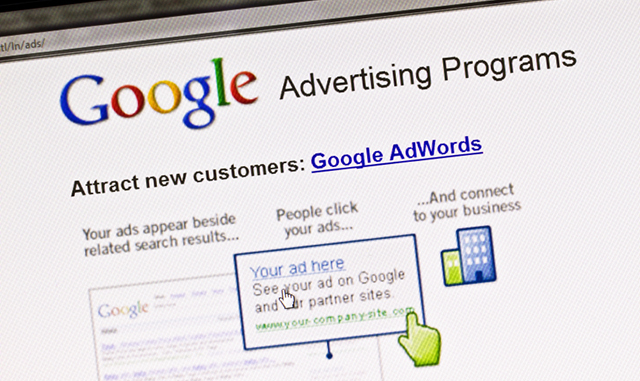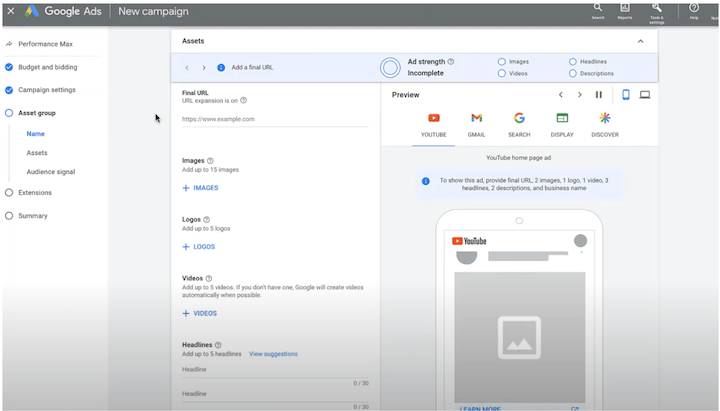Key Takeaways
- Strategic Visibility: Paid traffic cuts through digital noise, strategically positioning brands before precisely targeted audiences, fostering immediate visibility crucial for success.
- Dynamic Mechanics Unveiled: Explore the auction-based systems, bid strategies, and algorithms governing paid traffic, unraveling the competitive yet dynamic landscape of digital advertising.
- Tangible Benefits and Best Practices: From measurable ROI and targeted precision to real-world case studies, discover how best practices elevate paid traffic campaigns from average to exceptional in the modern marketing landscape.
In an ever-evolving landscape of digital marketing, where visibility is often synonymous with success, understanding the intricate workings of paid traffic has become a cornerstone for businesses striving to carve a niche in the online realm.

Defining Paid Traffic: The Digital Conduit
Paid traffic, in essence, refers to the influx of visitors driven to a website through advertising for which the advertiser incurs a cost per click or impression.
This section unveils the power of paid traffic in strategically positioning brands before a precisely targeted audience.
The Significance Unveiled: Fueling Digital Prominence
Explore the significance of paid traffic as the fuel propelling businesses to the forefront of search engine results pages and social media feeds.
Discover the dynamic synergy between consumer needs and promotional content in the virtual marketplace.
Unraveling Complexity: A Comprehensive Guide
Embark on a journey to unravel the layers that constitute the significance of paid traffic.
This blog endeavors to demystify the complexities surrounding paid traffic, providing a comprehensive guide to its multifaceted nature and shedding light on the mechanics that power its effectiveness.
Diverse Landscape: Forms of Paid Traffic Sources
From fundamental definitions to the intricate nuances of various forms, this section explores the diverse landscape of paid traffic sources.
Delve into the intricacies of search engine advertising, social media advertising, display advertising, and native advertising, each playing a pivotal role in shaping a brand’s online presence.
Mechanisms Unveiled: Operation of Paid Traffic
Delve into the mechanisms governing the operation of paid traffic.
This blog dissects the auction-based systems that determine ad placements, exploring bid strategies and algorithms that dictate the prominence of digital advertisements.
Navigate the terrain of targeting and audience segmentation, unraveling intricacies that refine reaching the right audience.
Strategic Imperative: Why Paid Traffic Matters
Explore the strategic imperative of paid traffic in the grand scheme of marketing strategies.
Uncover tangible benefits, from the immediacy of results and targeted precision to scalability and measurable ROI, aligning seamlessly with the demands of a fast-paced, data-driven digital landscape.
No journey is without challenges. Explore hurdles like budgeting, ad fraud, ad-blocking issues, and creative fatigue.
This blog addresses these pitfalls, providing insights into how businesses can navigate challenges and emerge stronger on the other side.
Best Practices: Guiding Lights for Success
Discover best practices as guiding lights for success.
From meticulous research and keyword selection to landing page optimization, uncover strategies that elevate a paid traffic campaign from average to exceptional.
Explore the importance of ad monitoring, performance analysis, and continuous testing in the roadmap for sustained success.
This blog aims beyond being a guide – it’s an exploration into the currents of paid traffic shaping the ebb and flow of modern marketing.
Whether you’re a seasoned marketer refining your approach or a newcomer unraveling mysteries, join this expedition into the heart of digital advertising.
As we embark on this odyssey, let’s unravel the tapestry of paid traffic and discover how it transforms mere clicks into meaningful connections in the vast landscape of digital marketing.
But, before we venture further, we like to share who we are and what we do.
About AppLabx
From developing a solid marketing plan to creating compelling content, optimizing for search engines, leveraging social media, and utilizing paid advertising, AppLabx offers a comprehensive suite of digital marketing services designed to drive growth and profitability for your business.
AppLabx is well known for helping companies and startups use digital marketing to drive web traffic to their websites and web apps.
At AppLabx, we understand that no two businesses are alike. That’s why we take a personalized approach to every project, working closely with our clients to understand their unique needs and goals, and developing customized strategies to help them achieve success.
If you need a digital consultation, then send in an inquiry here.
What is Paid Traffic and How It Works for Marketing
- Understanding Paid Traffic
- How Paid Traffic Works
- Benefits of Using Paid Traffic for Marketing
- Best Practices for Paid Traffic Marketing
1. Understanding Paid Traffic
In the vast realm of digital marketing, understanding paid traffic is akin to mastering the language of online success.
This section will delve into the core concepts, mechanics, and strategies behind paid traffic, unravelling its complexities and showcasing its pivotal role in driving targeted engagement and conversions.

Defining Paid Traffic: The Digital Conduit
Paid traffic is the influx of visitors directed to a website through paid advertising efforts, where advertisers incur a cost for each click or impression.
It represents a symbiotic relationship between businesses seeking visibility and potential customers searching for relevant products or services.
Example: Consider Google Ads, the quintessential search engine advertising platform.
Advertisers bid on keywords, and when users enter those keywords in a search query, paid ads appear at the top of the search results. The advertiser pays a fee when the ad is clicked, illustrating the essence of paid traffic.
The Power of Precision: Targeting and Audience Segmentation
One of the cornerstones of effective paid traffic lies in its ability to reach a precisely targeted audience.
This involves intricate processes of targeting and audience segmentation, ensuring that promotional content aligns with the demographics, geography, and behaviours of the intended audience.
According to a report by Statista, by 2026, the digital advertising spending would reach 836 billion dollars. This emphasizes the growing importance of precise audience targeting in paid traffic.
Key Metrics for Success: Beyond Clicks and Impressions
To gauge the success of paid traffic efforts, it’s essential to delve into key metrics that provide actionable insights.
Understanding metrics like click-through rate (CTR), conversion rate, cost per click (CPC), and return on investment (ROI) forms the bedrock of optimizing paid traffic campaigns.
The average click-through rate in Google Ads across all industries is 3.17% for search and 0.46% for display. This highlights the importance of monitoring and optimizing CTR for effective paid traffic campaigns.
Auction-Based Systems: Bidding for Prominence
The digital advertising landscape operates on auction-based systems, where advertisers bid for ad placements. Understanding the intricacies of these systems, bid strategies, and the algorithms that determine ad prominence is crucial for achieving optimal visibility.
Example: In Google Ads, advertisers bid on keywords relevant to their business.
The ad auction considers the bid amount, ad relevance, and expected click-through rate.
The ad with the highest Ad Rank gets the top spot, illustrating the competitive nature of auction-based systems.

Ad Creatives and Copywriting: Crafting Compelling Narratives
Beyond the technical aspects, the effectiveness of paid traffic is heavily influenced by the quality of ad creatives and copywriting.
Crafting compelling narratives that resonate with the target audience is imperative for capturing attention and driving engagement.
Creative contributes 47% of the impact to sales, on average, across both TV and digital.
This underscores the significant role that ad creatives play in the success of paid traffic initiatives.
The Role of Social Media: Beyond Clicks to Engagement
Social media platforms have become key players in the paid traffic landscape.
Understanding the dynamics of social media advertising, from sponsored posts to targeted campaigns, is essential for businesses aiming to tap into the vast user bases of platforms like Facebook, Instagram, and X (formerly Twitter).
Example: Facebook Ads provide a powerful platform for businesses to target specific demographics based on interests, behaviours, and demographics.
With roughly three billion monthly active users as of the second quarter of 2023, the reach and potential impact of Facebook’s paid traffic options are substantial.

The Mobile Revolution: Adapting to Changing Consumer Behavior
As mobile usage continues to dominate online interactions, paid traffic strategies must adapt.
Understanding the nuances of mobile advertising, responsive design, and location-based targeting is critical for staying relevant in the ever-evolving digital landscape.
In January 2023, mobile devices excluding tablets accounted for nearly 57 percent of web page views worldwide, showcasing the pervasive influence of mobile. This emphasizes the need for paid traffic campaigns optimized for mobile platforms.
In essence, understanding paid traffic involves navigating a dynamic landscape where precision, metrics, creativity, and adaptability converge.
2. How Paid Traffic Works
Understanding how paid traffic operates is pivotal for any business aiming to navigate the digital landscape effectively.
This section will delve into the intricacies of paid traffic, exploring the various types, auction-based systems, targeting strategies, and the overall mechanics that make it a dynamic force in digital marketing.

Types of Paid Traffic Sources
Search Engine Advertising: Google Ads Dominance
Search engine advertising, exemplified by Google Ads, is a cornerstone of paid traffic.
Advertisers bid on keywords related to their products or services, and when users search for those terms, ads appear at the top of the search results.
Example: A business selling fitness equipment may bid on keywords like “home gym” or “fitness accessories.” When users search for these terms, the business’s ad appears prominently, driving targeted traffic to their website.
Social Media Advertising: Targeting the Connected Audiences
Social media platforms, such as Facebook, Instagram, and X (formerly Twitter), offer extensive paid traffic opportunities.
Advertisers can create highly targeted campaigns based on user demographics, interests, and behaviors.
Example: An e-commerce brand specializing in fashion may use Instagram Ads to target users aged 18-30 interested in fashion and lifestyle. This precise targeting ensures the ad reaches the most relevant audience.
Display Advertising: Visual Appeal Across Websites
Display advertising involves placing visual ads on websites that users visit.
These ads can take the form of banners, images, or interactive multimedia, providing a visually appealing way to engage audiences.
Example: An online travel agency might use display advertising to showcase enticing images of vacation destinations on popular travel-related websites, capturing the attention of potential travellers.

Native Advertising: Seamlessly Integrated Promotions
Native advertising seamlessly integrates promotional content with the platform’s user experience.
It matches the look and feel of the site or app, making it less intrusive and more likely to be viewed by users.
Example: Sponsored content on news websites that aligns with the site’s editorial style and tone serves as a prime example of native advertising, offering a subtle yet effective way to reach the audience.

Auction-Based Systems: The Bid for Prominence
Bid Strategies: Setting the Stage
The heart of paid traffic lies in bidding strategies.
Advertisers set bids for keywords, audience targeting, or placements, competing against others for ad space.
The bid amount, along with ad quality and relevance, determines ad placement.
According to a study, the average CPC in Google Ads across industries is $2.69 for Search and $0.63 for Display. This underscores the competitive nature of bidding for ad prominence.
Ad Placement Algorithms: Balancing Relevance and Revenue
Ad placement algorithms determine where ads appear based on various factors, including bid amount, ad relevance, and expected click-through rate (CTR).
These algorithms strive to balance user experience with revenue generation for the platform.
Example: Google Ads uses the Ad Rank algorithm, which considers bid amount, ad relevance, and expected CTR. An ad with a high Ad Rank is more likely to appear in a prominent position.
Targeting and Audience Segmentation: Precision Personified
Demographic Targeting: Tailoring to User Characteristics
Demographic targeting allows advertisers to tailor their ads based on user characteristics such as age, gender, income, and education level.
This ensures that the content resonates with the intended audience.
Majorities of 18- to 29-year-olds say they use Instagram or Snapchat and about half say they use TikTok. Advertisers targeting this demographic can leverage Instagram Ads for effective reach.
Geographic Targeting: Localizing Advertising Impact
Geographic targeting enables businesses to tailor their ads to specific locations.
This is particularly valuable for local businesses aiming to reach audiences in a defined geographic area.
Example: A restaurant in New York City may use geographic targeting to display ads only to users within a certain radius, maximizing the impact of their promotions.

Behavioural Targeting: Understanding User Actions
Behavioural targeting involves delivering ads based on users’ online behaviour, such as websites visited, searches made, or content engaged with. This strategy aims to predict user preferences and deliver more relevant content.
A report states that 42.7% of internet users worldwide (16-64 years old) use ad blocking tools at least once a month.
Behavioural targeting helps deliver more relevant content, potentially reducing the likelihood of ad blocking.
Ad Creatives and Copywriting: Crafting Persuasive Messages
Importance of Compelling Ad Content
Compelling ad creatives and copywriting are paramount for capturing user attention.
The visual elements and messaging should resonate with the audience, prompting them to take the desired action.
Email marketing with videos increases CTR by 300%. This highlights the power of compelling visuals in driving engagement.
A/B Testing Strategies: Iterating for Success
A/B testing involves creating multiple versions of an ad and testing them to identify the most effective elements.
This iterative approach allows advertisers to refine their creatives based on real-time performance data.
Example: An e-commerce platform might A/B test two variations of a product ad, altering the product image or CTA button. Analyzing performance metrics helps determine the more effective version.

3. Benefits of Using Paid Traffic for Marketing
Unlocking the potential of paid traffic is a strategic imperative for businesses navigating the competitive digital marketing landscape.
This section will explore the myriad benefits that arise from leveraging paid traffic, supported by relevant examples, data-driven insights, and industry statistics.

Immediate Results and Visibility
Instantaneous Impact
Paid traffic provides businesses with the advantage of immediate visibility.
Unlike organic methods that take time to gain traction, paid advertising ensures that your brand or product is prominently displayed to users actively searching for related keywords.
Example: Consider a newly launched online store. By investing in Google Ads, the store can instantly appear at the top of relevant search results, attracting potential customers from day one.
Getting the first page at least once in a year was achievable for most qualified websites. Paid traffic circumvents this time lag, offering instant exposure.
Targeted Precision for Relevant Audiences
Demographic Targeting
Paid traffic platforms allow advertisers to precisely target audiences based on demographics, ensuring that ads are shown to the most relevant user segments.
This targeted approach enhances the likelihood of engagement and conversions.
Example: An e-commerce brand selling luxury watches can use demographic targeting to focus its ads on users with higher income levels who are more likely to make such high-end purchases.
99% of marketers say personalization helps advance customer relationships, with 78% claiming it has a“strong” or “extremely strong” impact. Paid traffic addresses this challenge by providing robust audience targeting capabilities.
Scalability for Business Growth
Budget Flexibility
Paid traffic offers businesses the flexibility to scale their advertising efforts according to their budget.
Whether you’re a small startup or an established enterprise, paid advertising allows for precise control over spending and allows adjustments based on performance.
Example: A local restaurant can start with a modest budget for Facebook Ads to promote a special event. As positive results are observed, the budget can be increased for broader reach.
A study found that companies redirected almost half of the marketing budgets towards social media and mobile activities during the COVID-19 pandemic. This underscores the scalability afforded by digital advertising channels.
Measurable Return on Investment (ROI)
Performance Analytics
Paid traffic platforms offer robust analytics tools that enable businesses to measure the performance of their campaigns.
Metrics like click-through rate (CTR), conversion rate, and return on ad spend (ROAS) provide tangible insights into the effectiveness of advertising efforts.
Example: An online retailer using Google Ads can track the performance of different product campaigns, identifying which ones generate the highest ROI and optimizing accordingly.

Paid traffic aligns seamlessly with this trend, offering measurable KPIs for precise analysis.
Enhanced Brand Exposure and Authority
Prominence in Search Results
Paid traffic, especially through search engine advertising, ensures that businesses appear prominently in search results.
This increased visibility not only drives traffic but also enhances brand recognition and authority.
Example: A software company using paid search advertising can secure top positions for relevant keywords, establishing itself as a reputable solution provider in its industry.
Paid traffic bridges the gap, ensuring visibility and clicks for businesses in competitive landscapes.
Adaptability to Market Trends
Rapid Adjustments
Paid traffic campaigns can be quickly adjusted to align with evolving market trends, ensuring that businesses stay relevant and capitalize on emerging opportunities.
This adaptability is crucial in dynamic industries.
Example: A fashion retailer can swiftly modify its paid advertising strategy to highlight seasonal trends or respond to shifts in consumer preferences.

According to a report, 54% of consumers want more video content from a brand or business they follow.
Paid traffic platforms allow businesses to promptly integrate video ads in response to this evolving content preference.
4. Best Practices for Paid Traffic Marketing
Navigating the intricacies of paid traffic marketing requires a strategic approach that incorporates industry best practices.
In this comprehensive guide, we’ll explore the key principles and techniques that businesses can employ to maximize the effectiveness of their paid traffic campaigns, supported by real-world examples, data-driven insights, and industry statistics.

Meticulous Research and Keyword Selection
Conduct Thorough Keyword Research
Before launching a paid traffic campaign, it’s crucial to conduct thorough keyword research to identify the terms and phrases relevant to your business. Utilize tools like Google Keyword Planner or Semrush to uncover high-performing keywords with sufficient search volume.
Example: A company specializing in organic skincare products may discover through keyword research that terms like “natural skincare,” “organic beauty,” and “vegan skincare” have high search volumes.
Long-tail keywords make up the majority of search queries in Google. Incorporating long-tail keywords in your paid traffic strategy can enhance specificity and relevance.
Optimization of Landing Pages
Align Landing Pages with Ad Content
Ensure that the content and messaging on your landing pages align seamlessly with the ad content. A cohesive user experience from ad click to a landing page increases the likelihood of conversions.
Example: If an ad promotes a specific product discount, the landing page should prominently feature the discounted product and provide a straightforward path for users to make a purchase.
Optimizing landing pages for specific campaigns is a proven strategy for driving conversions.
Ad Monitoring and Continuous Testing
Regularly Monitor Ad Performance
Constantly monitor the performance of your paid ads to identify trends and make timely adjustments.
Track metrics such as click-through rate (CTR), conversion rate, and cost per conversion to gauge effectiveness.
Example: An e-commerce brand may observe a drop in CTR for a specific product category. By monitoring this trend, they can quickly adjust ad creatives or targeting to address the issue.
Consistent monitoring allows businesses to identify opportunities for improving CTR and overall campaign performance.
Strategic Bid Management
Set Competitive Bids
Understanding the competitive landscape is essential for strategic bid management.
Set competitive bids based on the value of conversions and the competitiveness of your industry.
Example: In a highly competitive industry like online retail, businesses may need to set higher bids to ensure their ads appear prominently in search results.
Strategic bid management helps businesses optimize CPC and achieve a balance between visibility and cost-effectiveness.
Audience Segmentation and Targeting
Leverage Advanced Targeting Options
Paid traffic platforms offer advanced targeting options, allowing businesses to segment their audience based on demographics, behaviors, and interests.
Leverage these options to tailor your ads to specific audience segments.
Example: A travel agency offering luxury tours may target high-income individuals with an interest in luxury travel destinations.
Utilizing advanced audience targeting options can overcome this obstacle.
Ad Creative Optimization
Craft Compelling Ad Copy and Visuals
Invest time and effort in crafting compelling ad copy and visuals.
Your ads should not only grab attention but also convey a clear value proposition that encourages users to take the desired action.
Example: A software company launching a new product may use concise and compelling language to highlight key features and benefits in their ad copy.
Emphasizing creative quality is crucial for maximizing the impact of paid traffic campaigns.
Utilize Ad Extensions
Take Advantage of Ad Extension Options
Ad extensions provide additional information to users and enhance the visibility of your ads.
Utilize ad extension options such as site link extensions, callout extensions, and structured snippet extensions to provide more context and encourage clicks.
Example: A local service business can use callout extensions to highlight specific services, such as “24/7 Emergency Support” or “Free Estimates.”
On average, ad extensions can increase CTR by 10-15%.
Utilizing ad extensions enhances the overall visibility and appeal of your paid ads.
Data-Driven Decision-Making
Analyze Performance Data for Insights
Base your optimization decisions on data-driven insights.
Regularly analyze performance data, identify trends, and make informed adjustments to enhance the effectiveness of your paid traffic campaigns.
Example: If a particular geographic location consistently generates high conversion rates, allocate a larger portion of the budget to target users in that area.
53% of organizations consider data-driven marketing an integral part of their marketing approach.
Leveraging performance data is foundational for optimizing paid traffic strategies.
Adaptability to Platform Changes
Stay Informed About Platform Updates
Paid traffic platforms frequently update their algorithms and features.
Stay informed about these changes and adapt your strategies accordingly to take advantage of new opportunities and maintain competitiveness.
Example: Facebook’s introduction of new ad formats or targeting options may present opportunities for businesses to explore innovative approaches.
Staying abreast of platform changes allows businesses to capitalize on evolving advertising trends.
Conclusion
In the ever-evolving landscape of digital marketing, where visibility is synonymous with success, the exploration into the depths of paid traffic becomes an odyssey—an essential journey for businesses striving to carve a niche in the vast online realm.
As we conclude this comprehensive guide on “What is Paid Traffic and How It Works for Marketing,” it is evident that paid traffic stands as the linchpin of modern marketing strategies, propelling brands into the spotlight and fostering meaningful connections in the vast and competitive digital space.
Unveiling the Essence of Paid Traffic
At its core, paid traffic represents the influx of visitors driven to a website through strategically crafted advertising efforts, where advertisers incur costs per click or impression.
It transcends the noise of a saturated digital world, strategically positioning brands, products, or services before precisely targeted audiences. It’s not merely about clicks; it’s about creating a dynamic synergy between consumer needs and promotional content.
Demystifying the Complexities
As we embarked on this journey, we delved into the multifaceted nature of paid traffic, unravelling the diverse landscape of its sources.
From search engine advertising giants like Google Ads to the visual allure of display advertising, each facet plays a pivotal role in shaping the trajectory of a brand’s online presence. But understanding types is just the beginning.
Mechanics Governing Operation
To truly grasp the efficacy of paid traffic, we dissected the auction-based systems that determine ad placements. Exploring bid strategies and algorithms that dictate ad prominence unveiled the competitive yet dynamic nature of digital advertising.
Navigating the terrain of targeting and audience segmentation, we unravelled the intricacies of demographic, geographic, and behavioural targeting—refining the art of reaching the right audience at the right time.
Tangible Benefits in the Grand Scheme
Beyond buzzwords and metrics, we uncovered the tangible benefits that make paid traffic an indispensable tool in a marketer’s arsenal.
From the immediacy of results and targeted precision to scalability and measurable ROI, paid traffic aligns seamlessly with the demands of a fast-paced, data-driven digital landscape.
Navigating Challenges with Insight
Yet, no journey is without challenges. Budgeting, ad fraud, ad-blocking issues, and creative fatigue are hurdles that demand attention.
This guide did not shy away from addressing the pitfalls, providing insights into how businesses can navigate these challenges and emerge stronger on the other side.
Guiding Lights of Best Practices
As we navigated the complexities, best practices emerged as guiding lights.
Meticulous research and keyword selection, optimization of landing pages, strategic bid management, and audience segmentation were outlined as fundamental strategies.
Ad creatives and copywriting, coupled with ad monitoring and continuous testing, became keystones for elevating a paid traffic campaign from average to exceptional.
An Ongoing Expedition
In conclusion, this guide aims to be more than just a guide—it’s an ongoing expedition into the heart of digital advertising.
Whether you’re a seasoned marketer looking to refine your approach or a newcomer seeking to unravel the mysteries of paid traffic, the journey continues.
As we unravel the tapestry of paid traffic, we discover how it transforms mere clicks into meaningful connections in the vast landscape of digital marketing.
Join us on this odyssey, where the currents of paid traffic shape the ebb and flow of modern marketing.
As the digital tides continue to evolve, may your sails be filled with the winds of innovation, and may your voyage be marked by strategic triumphs in the dynamic world of paid traffic marketing.
If you are looking for a top-class digital marketer, then book a free consultation slot here.
If you find this article useful, why not share it with your friends and business partners, and also leave a nice comment below?
We, at the AppLabx Research Team, strive to bring the latest and most meaningful data, guides, and statistics to your doorstep.
To get access to top-quality guides, click over to the AppLabx Blog.
People also ask
What is paid traffic in marketing?
Paid traffic in marketing refers to website visitors acquired through paid advertising efforts. Advertisers pay a fee when users click on their ads or view them. This strategic approach enhances visibility, targets specific audiences, and is a cornerstone of modern digital marketing campaigns.
What is paid traffic in SMMA?
In Social Media Marketing Agencies (SMMA), paid traffic involves utilizing paid advertising on platforms like Facebook, Instagram, and X (formerly Twitter). Advertisers pay for user engagement, leveraging targeted campaigns to boost brand visibility, reach specific audiences, and drive desired actions for their clients.
What is traffic in marketing?
In marketing, traffic refers to the flow of visitors to a website or online platform. It is a key metric indicating the volume of users engaging with the content. Increased traffic is often a goal, achieved through various strategies like SEO, social media, and paid advertising.






























